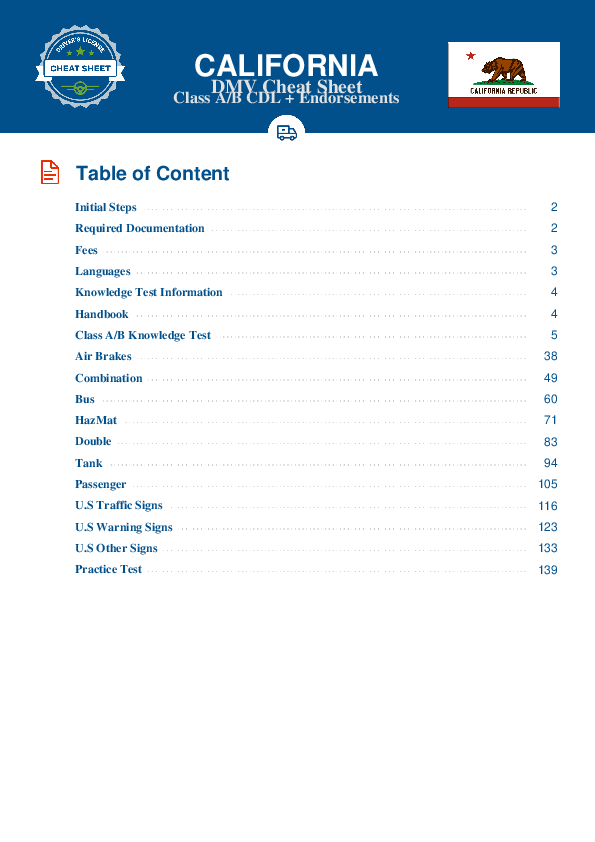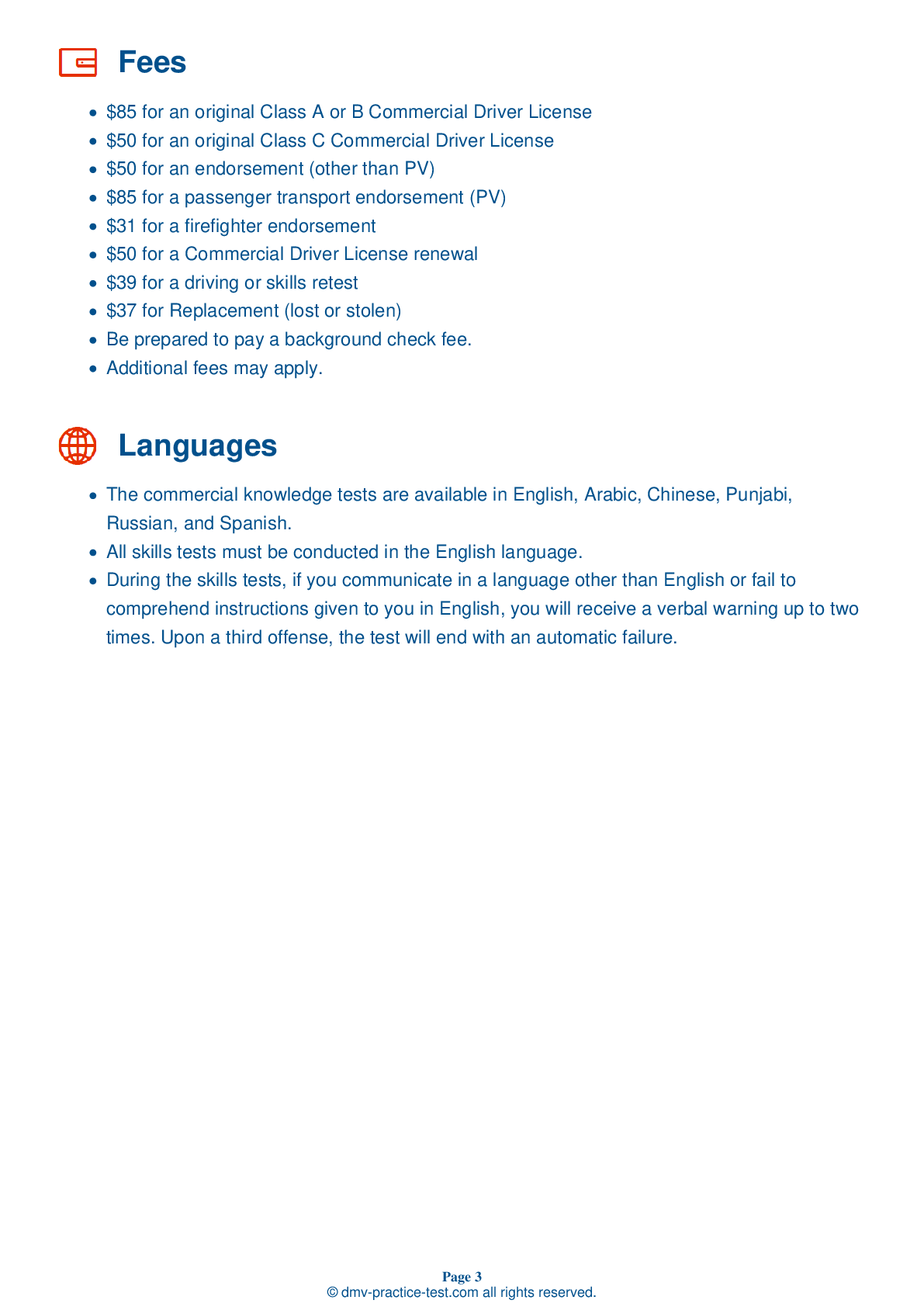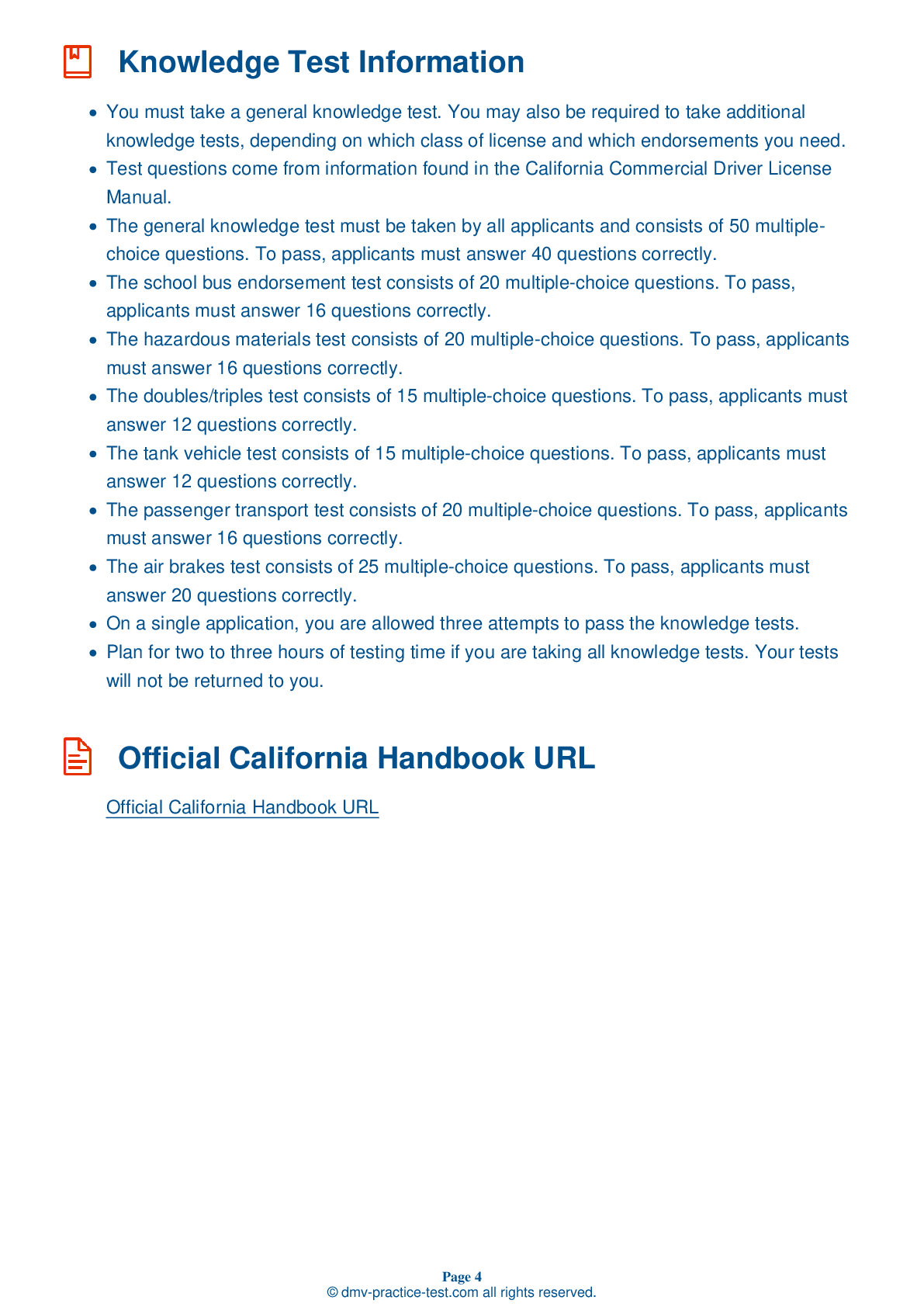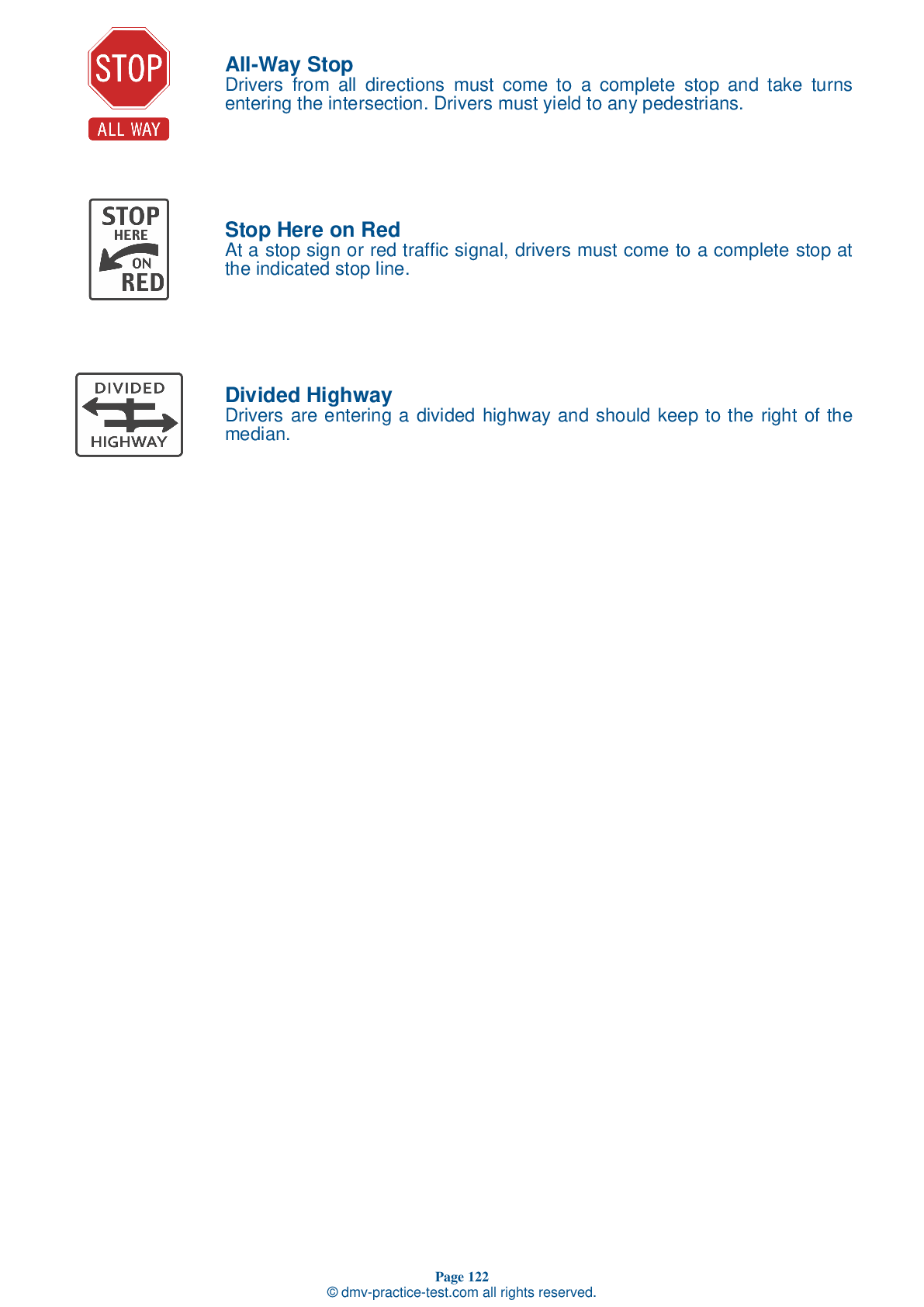Class A Driving Test | California 2025 #1 Page 7 of 7
Train for FREE online with our California class A license test. The official exam test consists of several obligatory parts, with all of them checking your knowledge of different blocks of road rules. If you need to obtain a CA CDL class A permit in 2025, practice as much as possible. Free sample tests published on our website will help you check and improve your knowledge and boost your grades. Please bear in mind that CDL class A requirements may vary from state to state.
43 . During an applied leakage test, what is the maximum leakage rate that is safe for a single vehicle with air brakes?
It is important to know the maximum air loss rate that is safe for your specific vehicle. A single vehicle with air brakes should have a leakage rate no higher than 3 psi in a minute during an applied leakage test.
44 . Having weight loaded in a way that creates a high center of gravity:
Transporting cargo that is loaded with a high center of gravity increases the risk that the transporting vehicle will tip over. Cargo should be loaded with a safe weight distribution.
45 . To warn drivers behind you that you will be slowing down, you should:
To let drivers behind you know that you plan to slow down, lightly tap your brake pedal a few times to flash your brake lights. It is important to communicate your intentions to other drivers.
46 . A one-way check valve:
A one-way check valve is required to be between an air compressor and the first main reservoir. This valve prevents air from escaping the system if the air compressor develops a leak.
47 . You may not consume alcohol within ____ of going on duty.
Commercial vehicle drivers are prohibited from consuming any intoxicating beverage, regardless of its alcohol content, within four hours of going on duty.
48 . The ____ are activated by an electric switch that is triggered by the brake pedal.
In a vehicle with air brakes, the brake lights are activated when the brake pedal is pushed and air pressure moves an electric switch. With the application of air pressure, the switch will then turn on the brake lights.
49 . What do the two systems of a dual air brake system share?
Both systems in a dual air brake systems share a single air compressor. If the air compressor is damaged, neither system will be able to operate properly.
50 . When exiting a vehicle, a driver should:
When exiting your vehicle during the basic vehicle control skills test, you must face the vehicle and maintain three points of contact at all times. If your testing vehicle is a bus, you must maintain contact with the handrail. Exiting the vehicle incorrectly may result in automatic failure of the basic vehicle control skills test.
See the exact questions that will be on the 2025 California DMV exam.
99.2% of people who use the cheat sheet pass the FIRST TIME
Lillian MCcranie explains how our CDL study guide was helpful in passing the exam and recommends it to everyone.
Cameron tells us how he purchased the CDL exam, and found it to be a useful tool which helped him pass the exam and find a job.



